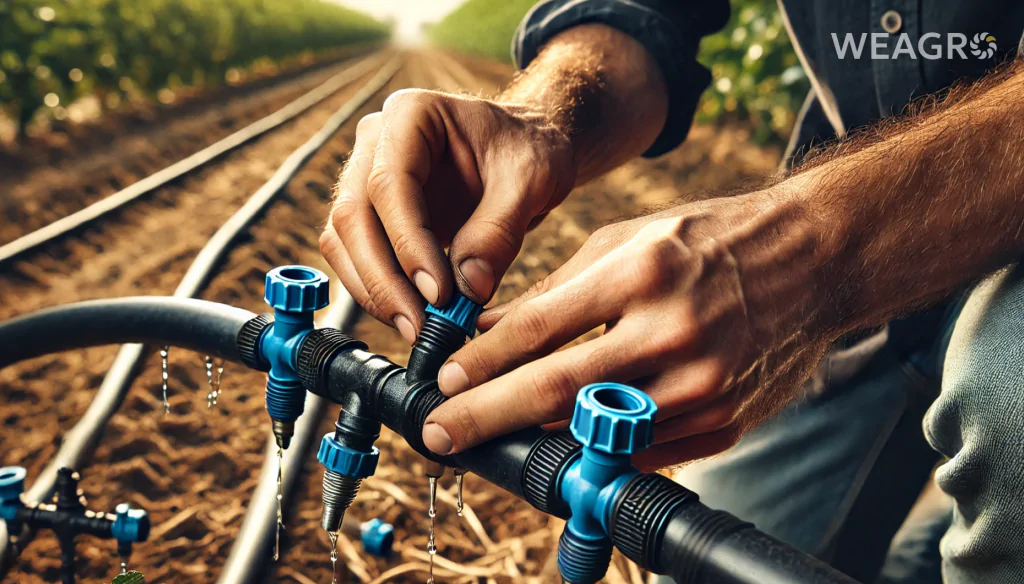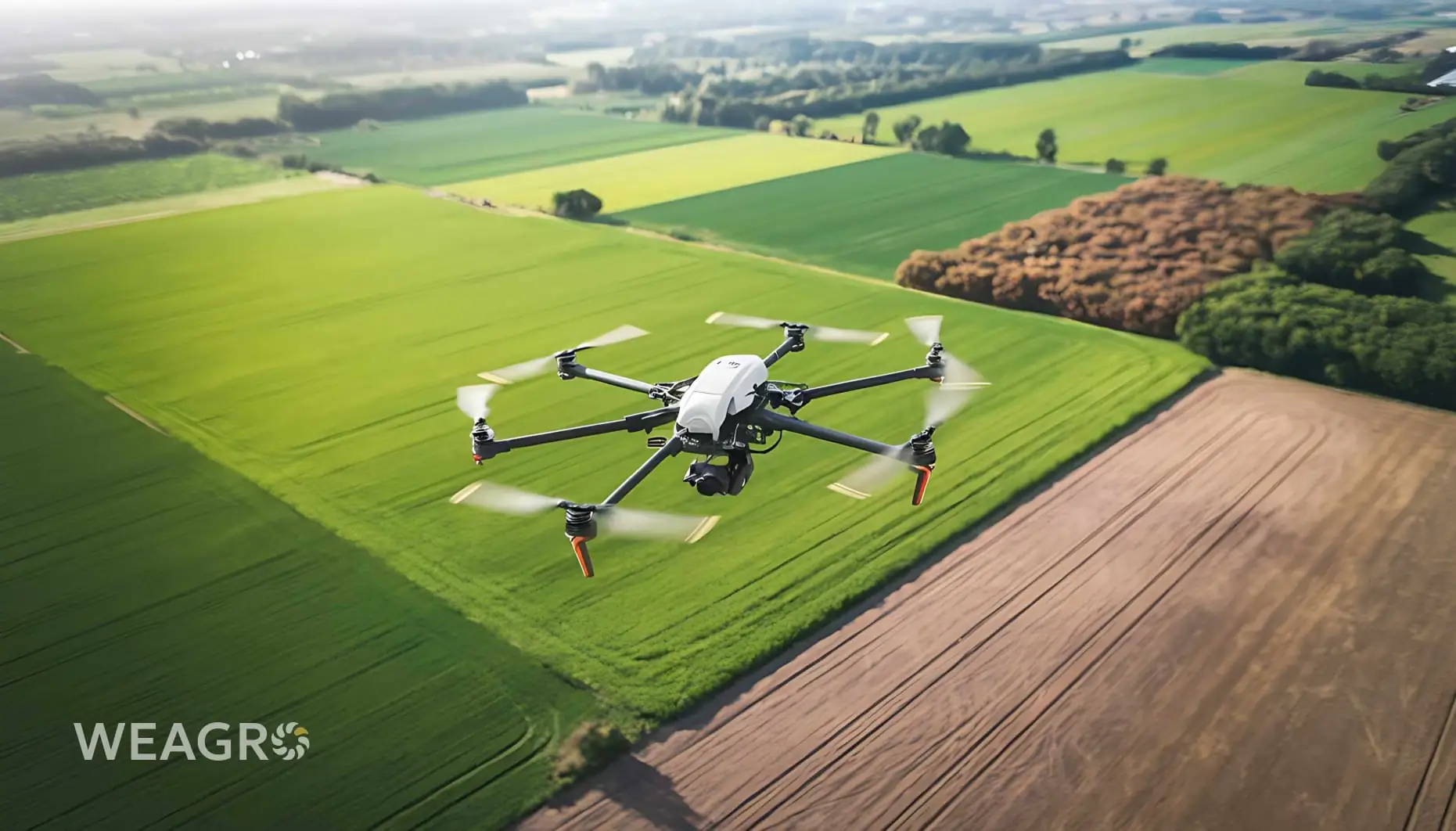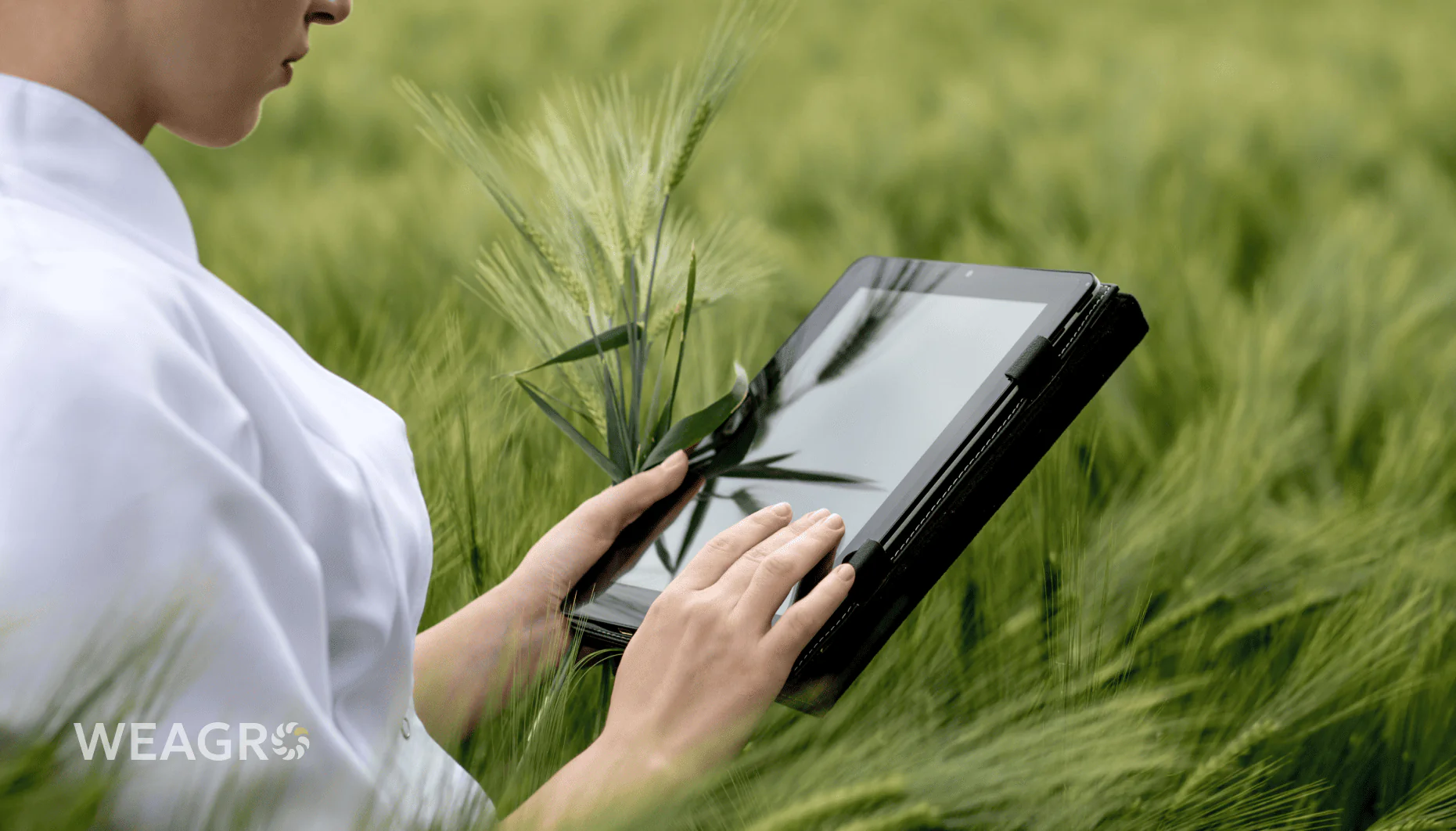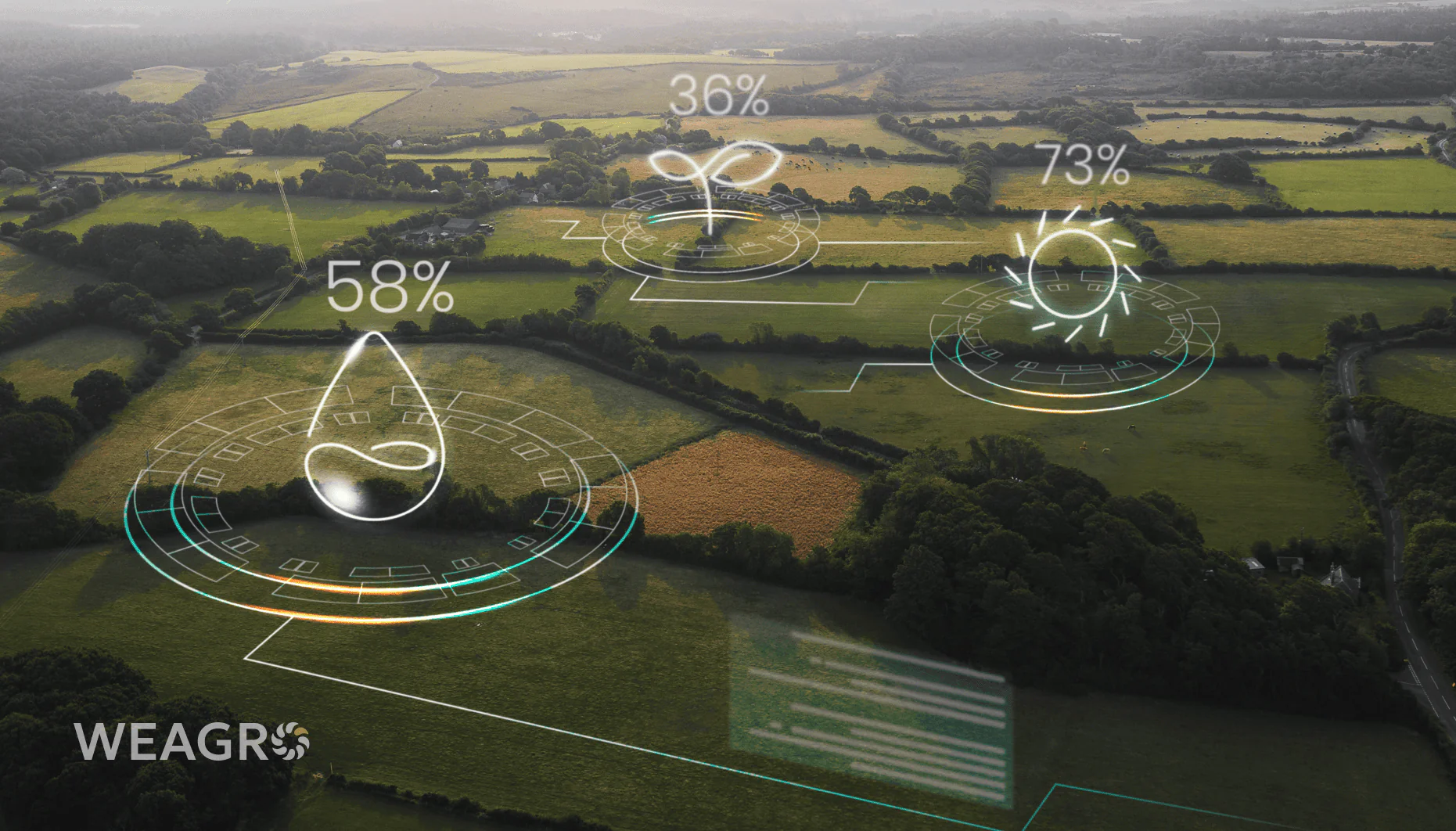Irrigation is a process that plays a key role in maintaining plant health and increasing crop yields. It becomes especially relevant in the context of climate change and dry periods. Let’s take a closer look at what irrigation is, what types and norms of watering exist, and how to optimize this process for effective agribusiness management.
What is Irrigation
Irrigation is the process of artificially providing soil and plants with the necessary amount of liquid for their normal growth and development. The main purpose of irrigation is to create optimal moisture conditions in the root zone of crops throughout the growing season.
Properly organized water supply allows:
- maintaining plant health;
- increasing crop yields;
- improving product quality;
- reducing risks of losses due to drought.
In addition to direct watering, irrigation is also used to apply fertilizers with water (fertigation), combat frost, and flush saline soils.
Irrigation regime is one of the types of hydromelioration. It improves the supply of liquid with nutrients to plant roots, lowers the temperature of the surface air layer, and increases its humidity. This allows managing water, air, thermal, salt, and microbiological soil regimes to create optimal conditions for crop growth.
Read also: Soil erosion: causes, types, control measures
Types of Irrigation
There are various types and methods of irrigation, each with its own characteristics, advantages, and disadvantages. Let’s look at the main ones.
Surface Irrigation
We should start exploring the types of irrigation with the oldest one. It involves water being distributed across the field through furrows or flooding it. This type of watering requires large amounts of liquid and energy, has low uniformity of moistening, and leads to soil erosion. However, it is still used on flat areas with heavy soils.
Sprinkler Irrigation
During sprinkler irrigation, liquid is sprayed over the field using specialized machines, creating artificial precipitation. This method is more economical and efficient than surface irrigation. Sprinkler irrigation ensures even distribution of water and improves the microclimate in crops. It can also be used for frost protection irrigation – when watering is carried out at the onset of frost to protect plants from low temperatures. However, sprinkler irrigation is sensitive to wind and can lead to soil compaction.
Drip Irrigation
Drip irrigation is the most modern and efficient type of watering. Water is supplied under low pressure directly to the root zone of plants through a network of tubes. This allows for maximum savings in liquid, fertilizers, energy, and precise control of the irrigation regime. Drip systems can be automated and integrated with fertigation. Disadvantages: high initial cost and risk of tube clogging.
Drip water supply can be above-ground, where irrigation equipment is placed on the surface along plant rows, or subsurface (Subsurface Drip Irrigation), where tubes are laid in the ground at a depth of about 30 cm. Subsurface drip irrigation is a way to further reduce water loss through evaporation without interfering with soil cultivation.
Subsurface Irrigation
In subsurface irrigation, liquid is supplied directly to the root zone of plants using buried pipelines or porous materials. This method minimizes unproductive water loss through evaporation and does not wet the above-ground part of the crop. However, it requires careful control of soil moisture and water quality to avoid salinization or pore clogging.
What Devices are Used for Artificial Irrigation

Let’s examine the devices used for artificial field irrigation:
- pump stations for water intake and supply;
- main and distribution pipelines;
- shut-off and control valves (gate valves, taps, valves);
- filtration systems;
- sprinkler machines and devices;
- drip tapes, drippers;
- soil moisture sensors and weather stations;
- automation for irrigation control.
The choice of specific irrigation equipment depends on the size and configuration of fields, soil types, terrain features, crops grown, availability and quality of water resources, financial capabilities of the farm, and more. In any case, the irrigation system should be reliable, efficient, and convenient to operate.
Modern sprinkler irrigation machines include circular, linear, and hose-reel units. They allow for uniform moistening of large areas with minimal labor costs. They are equipped with adjustable nozzles for controlling precipitation intensity, computer control, and hose reeling systems.
Read also: Precision Farming in Ukraine: Definition and Prospects
Irrigation Norms
After understanding what land irrigation is, it’s important to determine the irrigation norms – the amount of liquid in cubic meters that needs to be supplied to 1 hectare of area in one watering to ensure optimal moisture in the root-containing soil layer. It depends on many factors:
- moisture capacity and water-physical properties of the soil;
- root depth and crop development phase;
- weather conditions (temperature, air humidity, precipitation);
- method and technique of irrigation.
There are single irrigation norms for one watering and total irrigation norms for the entire season. To determine them accurately, formulas and methodologies are used. On average, irrigation norms are:
- for surface irrigation – 600-1200 m³/ha;
- for sprinkler irrigation – 300-800 m³/ha;
- for drip irrigation – 50-200 m³/ha.
Excessive irrigation leads to leaching of nutrients, soil compaction, waterlogging, and salinization. That’s why it’s so important to adhere to optimal norms.
Accurate determination of irrigation norms is facilitated by modern soil moisture control methods – tensiometry and THV. Tensiometers provide data on the suction pressure of water by the soil, based on which irrigation timing can be established. The THV method allows calculating evaporation and transpiration based on air temperature and humidity, as well as determining the irrigation norm.
Water Quality for Irrigation
In addition to water quantity, its quality is of great importance. Irrigation water must meet certain requirements for chemical composition, salt content, and impurities. Using water of unsatisfactory quality deteriorates soil properties, harms plants and irrigation equipment.
The main indicators of water quality:
- total mineralization (up to 1 g/l);
- pH value (6.5-8);
- content of toxic salts (chlorides, sulfates, carbonates);
- presence of suspended substances and algae;
- sanitary and hygienic indicators.
To assess the quality of irrigation water, laboratory analysis is conducted before the start of the irrigation season, as well as periodically during it. If necessary, water can be improved and conditioned.
Particularly strict requirements are imposed on water for drip irrigation. It must undergo thorough purification from mechanical impurities, hardness salts, and microorganisms to prevent clogging of drippers. For this purpose, systems with mesh, disc, and hydrocyclone filters are used. To improve water quality, it is also subjected to settling, coagulation, and chlorination.
Consequences of Excessive Irrigation
Excessive irrigation can have negative consequences for soil and plants:
- leaching of nitrogen, potassium, and other nutrients from the soil;
- deterioration of aeration, soil compaction;
- raising of groundwater levels, waterlogging;
- soil salinization and alkalinization;
- disruption of plant root system development;
- creating favorable conditions for disease occurrence.
These problems can be avoided by adhering to scientifically based regimes, controlling soil moisture, irrigation water quality, and plant condition. Excessive irrigation is no less harmful than its deficiency.
Most often, what causes excessive irrigation is incorrect determination of irrigation norms, imperfection of irrigation techniques, and lack of proper control over water consumption. To avoid over-moistening, it is necessary to focus on data about actual soil moisture, obtained, for example, using tensiometers. Irrigation should be carried out with a moisture deficit of 60-80% from field capacity during critical periods of plant growth.
Optimization of Irrigation Regime
So, we have understood what irrigation is. But it is also important to make it as effective and economical as possible. To do this, it is necessary to:
- correctly determine the timing and norms of irrigation depending on crop development phases, weather conditions, soil moisture, and properties;
- use modern control methods – tensiometers, sensors, satellite monitoring;
- apply water-saving methods, such as drip irrigation;
- automate the irrigation process using weather stations, sensors, programmable controllers;
- combine irrigation with fertigation to use water and fertilizers more efficiently;
- combat water losses through evaporation or uncontrolled runoff;
- implement agrotechnical measures for accumulation and conservation of moisture in the soil – snow retention, mulching, minimal tillage.
This is how water supply becomes a reliable tool for intensifying agricultural production, increasing its sustainability in the face of climate change.
The online service WEAGRO will help agricultural entrepreneurs purchase modern sprinkler equipment and drip irrigation systems. This opens up new opportunities for optimization, resource savings, and yield increase.
Irrigation in Ukraine
Irrigated lands occupy about 5% of all agricultural lands in Ukraine. The largest irrigation areas are concentrated in the southern regions – Kherson, Zaporizhzhia, Odesa, and Mykolaiv oblasts. In these regions, irrigation is crucial for maintaining stable agriculture in arid climate conditions.
However, over the years of independence, irrigation systems in Ukraine have deteriorated due to lack of funds for modernization and operation. Many canals, pipelines, and pumping stations are in disrepair or have been dismantled. As a result, less than half of the available irrigated lands are actually being watered.
At the same time, in recent years, there has been growing interest in restoring and developing irrigation in Ukraine. Agricultural producers are increasingly investing in modern sprinkler machines and drip irrigation systems, which allow for efficient use of water resources and obtaining high and stable yields. The state is also gradually restoring funding for the reconstruction of irrigation infrastructure.
The WEAGRO service also contributes to this by offering farmers favorable conditions for purchasing irrigation equipment with installment plans or deferred payments. This makes investments in water supply more accessible for small and medium-sized agricultural enterprises.









